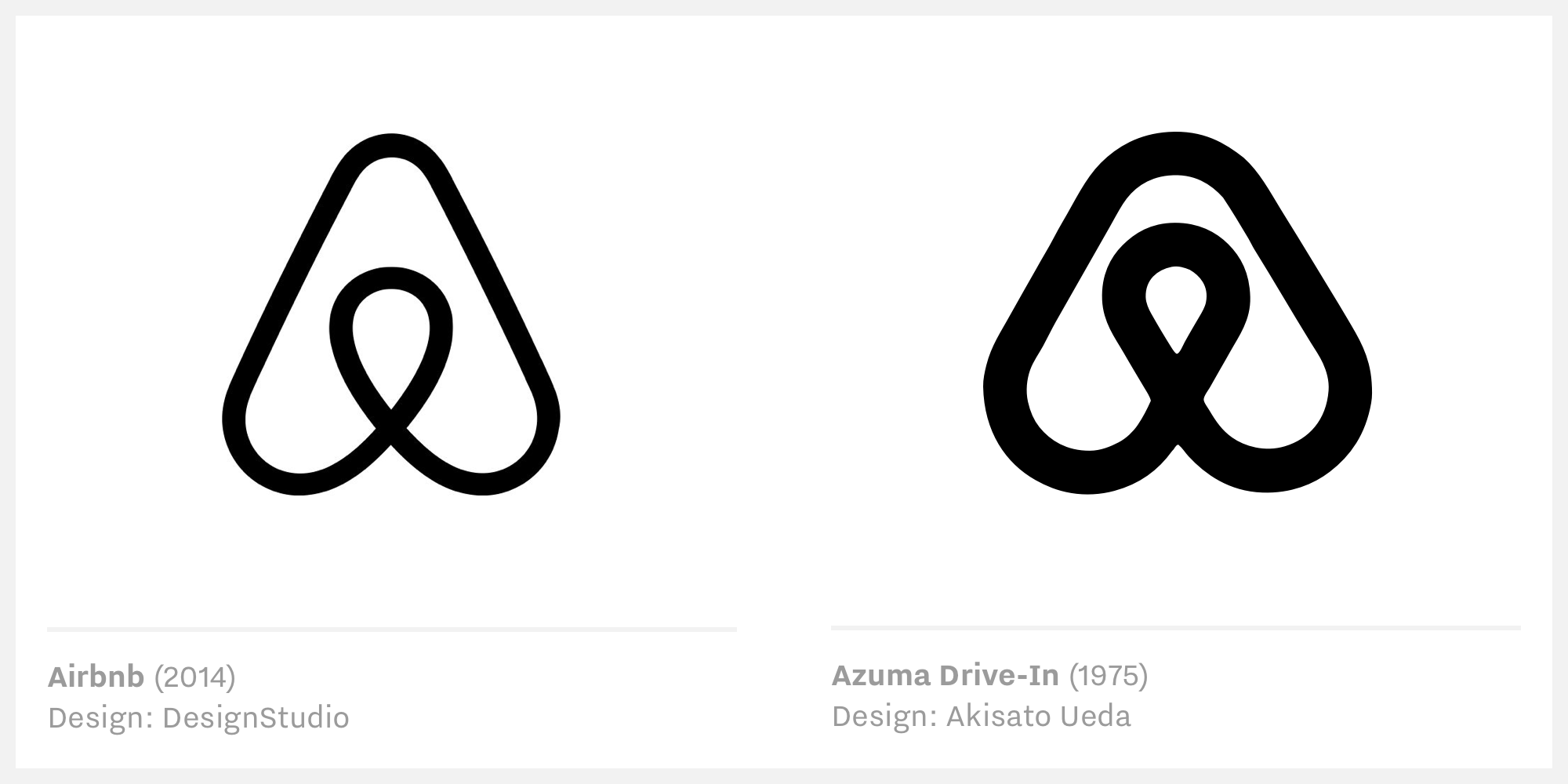

“Wait, I’ve seen this logo before. Why does it seem so familiar to me?”
After a few years in Design you eventually find out that everything has been done before. I figured out where some popular logos might have come from. When does copying become stealing? Is it even that bad?


Design solves problems while adding uniqueness to the end result. That is called creativity. We are bombarded with visual messages all day. Maybe you saw a great design featured on some blog. A few months later you come up with something similar. You might just not remember why you came up with such a solution. When creating, we are recycling impressions all the time without realizing it.


Some websites like calling out brands for ripping-off or stealing a Design. In many cases there is no differentiation between stealing and copying. I’d like to state how I distinguish between these two terms.
Stealing means replicating a design end-to-end. The company wants to profit from the attributes the design communicates. Stealing is sewing a Nike logo on sweaters to sell them for double the price. Design is an approach that is tailored to each instance it is applied, thereby making it hard to imitate. Stealing often involves a discrepancy between communicated message and content. Self-image and public image are not congruent. Thats why premium brands can’t be imitated easily. Stealing is an insidious attempt at not being discovered.
Copying is different. It’s the way we learn. Think about how babies grow-up and learn new skills: they imitate their parents. Thousands of years ago some iconic Roman sculptures were created by casting exact copies of Greek statues. By copying we are acknowlodging the past and building upon existing knowledge. I taught myself how to program by copying code from other websites and playing around with it. Copying means being influenced by an idea and applying it in a different form and context. It pays tribute to the originator and always challenges the appropriate use for itself.


Take the concept of Flat Design. It’s a style that Googles Material Design leveraged, but they didn’t come up with it. It’s difficult to find out who started something. Even if you do find the originator, how do you know they weren’t influenced by something they weren’t aware of? Maybe they’re only hiding their source? As you see, we’re quickly getting into a chicken-egg-debate here.


Semantics make the world better navigable for us. We take commonly understood pictograms and alter them to a brand language. Semantics mean you recognize a symbol of which you have learnt the meaning. Think about the fire exit sign, the hamburger icon or the power switch symbol. By embracing this we make our work usable for a wide variety of people. No one would call this stealing. Still, it is copying.



“Things which are different in order to be different are seldom better, but that which is made to be better is almost always different.” Dieter Rams
While reflecting on this I changed the way I used the words copying and stealing. Copying offers opportunity to learn while stealing avoids the hard work. Stealing implicits that all Design challenges deserve the same solution. We don’t have to act like we’re reinventing the wheel every time— even if we might sell it that way sometimes. There are a lot of replicable parts in Design. You must listen and still strive for originality, otherwise you will end up with dissatisfied clients, a bad reputation and zero personal growth.
Have you ever caught yourself copying an idea? Were you the one that was stolen from? How did you deal with that? Is anything original anymore? I’d love to hear your thoughts on this.
“Semantics make the world better navigable for us. We take commonly understood pictograms and alter them to a brand language. Semantics mean you recognize a symbol of which you have learnt the meaning. Think about the fire exit sign, the hamburger icon or the power switch symbol.”
“Semantics”? Don’t you mean “semiotics” - which is the study of signs and symbols?